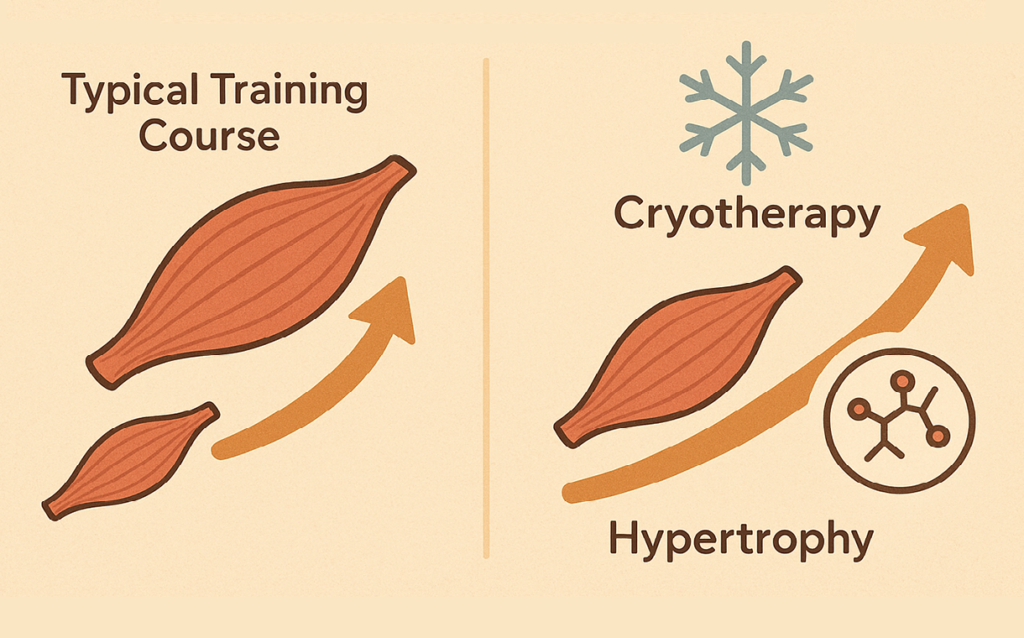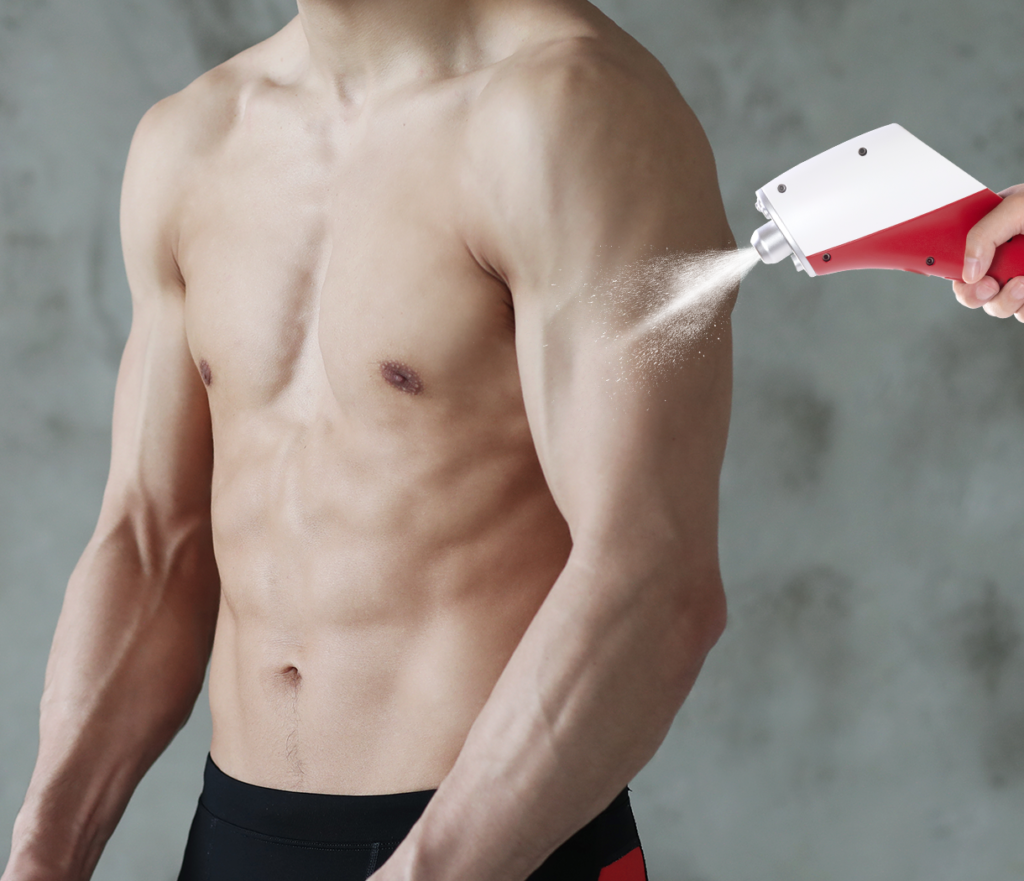Introduction: Breaking Down Muscle Recovery Challenges
Modern fitness enthusiasts and athletes face an ongoing challenge: optimizing recovery to maintain consistent training intensity while minimizing downtime. As exercise science advances, innovative recovery modalities have emerged to address the physiological demands of intense training regimens. Among these cutting-edge approaches, CO₂ 냉동 요법 has gained significant traction, offering a targeted solution for muscle recovery that goes beyond traditional ice applications. The quest for effective recovery methods stems from our understanding of exercise-induced muscle damage (EIMD) and the complex inflammatory cascade that follows intensive training. When muscles undergo stress during resistance training or high-intensity activities, microscopic damage occurs to muscle fibers, triggering an inflammatory response that, while necessary for adaptation, can significantly impact subsequent performance and comfort levels.
Why Muscle Recovery Matters
Muscle recovery is essential for athletic progress and overall fitness. After exercise, muscle fibers repair and rebuild, leading to increased strength and resilience. However, delayed-onset muscle soreness (DOMS), inflammation, and fatigue can disrupt training consistency and performance. Research shows that cryotherapy can reduce inflammation, improve blood flow, and ease DOMS, helping athletes recover faster and train more effectively. These benefits support higher training volumes with less discomfort. Recovery involves complex biological processes—inflammatory control, cellular repair, and vascular regulation. When optimized through targeted strategies like CO₂ cryotherapy, these mechanisms enhance healing and reduce downtime. By understanding and supporting these recovery pathways, athletes and fitness enthusiasts can develop evidence-based routines that promote consistent performance gains and long-term progress. In short, smart recovery is smart training.
The Rise of CO₂ Cryotherapy in Fitness and Sports Medicine
CO₂ cryotherapy has emerged as a sophisticated alternative to traditional whole-body cryotherapy chambers and ice baths. This localized approach utilizes carbon dioxide in its solid form (dry ice) to deliver precise, controlled cooling to specific muscle groups. Unlike nitrogen-based systems, CO₂ cryotherapy offers enhanced safety profiles and more targeted application capabilities, making it increasingly popular among sports medicine professionals and recovery specialists. The industry-wide shift from nitrogen to electricity-driven cryo systems is advancing at an unexpectedly rapid pace, reflecting a significant change in the landscape of cryotherapy technology. This trend emphasizes the industry’s move towards safer, more convenient, efficient, and precise technologies. The precision and control offered by CO₂ systems allow practitioners to deliver therapeutic temperatures directly to affected muscle groups without the logistical challenges associated with whole-body chambers.
How CO₂ Cryotherapy Accelerates Muscle Recovery
The therapeutic effects of CO₂ cryotherapy extend beyond simple cooling, involving sophisticated physiological responses that directly impact muscle recovery processes. Understanding these mechanisms provides insight into why this modality has become increasingly adopted by elite athletes and fitness professionals seeking optimal recovery outcomes.
How Does CO₂ Cryotherapy Work to Speed Up Muscle Recovery?
CO₂ cryotherapy works by delivering cold at around -78°C using a handheld device in short bursts of 10–15 seconds per site. This targets specific muscle groups like the biceps and triceps without subjecting the whole body to cold. The rapid cooling causes vasoconstriction, reducing blood flow and inflammation, which shortens recovery time. Nerve conduction slows, providing immediate pain relief, while enzyme activity decreases, preventing further tissue damage. As the area rewams, vasodilation occurs, enhancing blood flow and nutrient delivery to the muscles. This physiological sequence—cool, constrict, relieve, rewarm—creates a controlled environment that speeds healing and reduces soreness. The localized application allows for precise recovery targeting and minimal risk when properly administered, making it ideal for post-workout treatment of upper limb muscles.
Faster Recovery of Biceps and Triceps Post-Workout
Biceps and triceps respond well to localized CO₂ cryotherapy due to their superficial location, allowing efficient cooling. After intense upper body workouts, cryotherapy reduces inflammation and soreness, improving muscle recovery timelines. Studies show that carbon dioxide hydrate cryotherapy improves neuromuscular fatigue recovery and enhances blood circulation. Treatment is applied systematically—from shoulder to elbow for biceps, and across all triceps heads for full coverage—ensuring even cooling and consistent outcomes. This method helps reduce discomfort, restore function, and shorten muscle recovery cycles, making it ideal for athletes focused on high-frequency training. Efficient treatment coverage, combined with low application time, allows gym-goers and professionals alike to recover faster without disrupting training schedules.
Comparing Recovery Timelines: With vs. Without Cryotherapy
Without cryotherapy, muscle soreness peaks at 24–48 hours and may last up to 96 hours post-exercise. CO₂ cryotherapy shortens this window, reducing soreness intensity and enabling faster return to activity. Studies show athletes using cryotherapy experience 30–40% less muscle soreness at 24 and 48 hours post-workout. Functional performance measures, such as strength and range of motion, also improve faster than with passive recovery. These benefits translate into greater training consistency, particularly for athletes with tight schedules or multiple weekly sessions. Compared to rest alone, cryotherapy speeds up baseline recovery, minimizes training interruptions, and supports better long-term performance progress.

Impact on Muscle Strength and Hypertrophy Gains
Cryotherapy aids recovery, but its impact on long-term muscle growth depends on timing and usage. While it reduces inflammation, overuse might suppress growth-related signaling if applied too frequently post-training. Studies support its role in enhancing explosive strength and endurance, primarily through faster recovery. Used strategically, cryotherapy helps athletes maintain higher training frequency without accumulating fatigue, indirectly supporting strength and hypertrophy gains. To avoid interfering with adaptive processes, experts recommend applying cryotherapy after volume-heavy or competition days, not every workout. This balanced strategy preserves inflammation signaling essential for muscle growth while maximizing short-term benefits like soreness reduction and performance recovery.
What Research Says: Studies Supporting Muscle Recovery
Research confirms cryotherapy’s effectiveness in reducing muscle pain, inflammation, and fatigue. One review found 80% of studies reported pain reduction post-whole-body cryotherapy, with similar effects expected in localized CO₂ use. Mechanisms include vasoconstriction, enzyme activity suppression, and reduced secondary damage to healthy tissue. These lead to measurable improvements in soreness levels, functional performance, and muscle readiness. Meta-analyses show consistent benefits across key recovery metrics—subjective pain, range of motion, and inflammation biomarkers. Cryotherapy’s evidence-based advantages make it a powerful tool in modern recovery protocols, especially for athletes and fitness enthusiasts seeking faster, more reliable recovery outcomes.
CO₂ Cryotherapy for Athletes and Gym Enthusiasts
The practical application of CO₂ cryotherapy extends beyond elite athletic settings, offering valuable benefits for recreational gym enthusiasts and weekend warriors seeking enhanced recovery. The accessibility and targeted nature of CO₂ systems make them practical solutions for various training environments and recovery protocols.
Real-World Cryotherapy Use Cases for Athletes and Gym-Goers
CO₂ cryotherapy is widely used by professional athletes—including strength trainers, bodybuilders, and CrossFit competitors—to accelerate recovery from intense upper-body training. Its localized precision allows targeting of sore biceps, triceps, or shoulders based on daily training loads. Recreational users, like weekend warriors or general gym-goers, benefit from reduced soreness and faster recovery, helping them maintain consistency despite less frequent training. CO₂’s ability to mitigate delayed-onset muscle soreness (DOMS) supports quicker return to activity. Portable CO₂ cryo systems make advanced recovery tools accessible outside clinics, whether at gyms or home. This versatility and convenience enable personalized recovery regardless of fitness level, giving a broader audience access to professional-grade post-exercise care.
Targeting Upper Body Muscle Groups: Practical Guide
Proper CO₂ cryotherapy technique enhances results and ensures safety. For biceps treatment, apply cooling from shoulder to elbow along the muscle belly with steady, even strokes. For triceps, focus on the posterior arm, covering all three heads—especially the long head insertion near the scapula and the olecranon process. Typical parameters: 10–15 seconds per site, with 2–3 second intervals, help prevent overcooling. A full upper-arm treatment session usually lasts 3–5 minutes, depending on muscle size and tolerance. Maintaining consistent distance and movement patterns is key to effective coverage. Use of protective gear and trained supervision ensures safe application, maximizing pain relief and recovery without risking frostbite or discomfort.
Combining Cryotherapy with Other Recovery Modalities
Using CO₂ cryotherapy with complementary methods enhances recovery. After cryo, light stretching, massage, or mobility work becomes more effective due to reduced muscle tension. These combinations improve tissue responsiveness and overall circulation. Although most studies focus on cold-water immersion, the benefits—reduced soreness, better strength recovery—can extend to localized CO₂ treatment when paired with holistic strategies. Nutrition also plays a key role. Post-workout protein, hydration, and anti-inflammatory foods enhance muscle repair and reinforce the benefits of cryo. Consider factors like sleep, stress, and inflammation levels, which all interact with cryotherapy outcomes. Rather than relying on one method, integrated recovery planning delivers better, longer-lasting results.
When to Use Cryotherapy: Pre-Workout vs Post-Workout?
Post-workout CO₂ cryotherapy is most common—used to reduce inflammation, ease pain, and accelerate recovery after intense training. It’s particularly useful for minimizing DOMS and protecting against overuse injuries. Pre-workout use, while less common, may be appropriate for chronic soreness or injury prevention under professional guidance. However, applying cold just before intense exercise can reduce muscle performance or flexibility temporarily. Some studies suggest that brief cooling at 0°C may enhance strength, but lower temperatures or longer durations could impair movement speed. Timing and temperature control are crucial. Always tailor usage based on goals, body response, and expert input to avoid counterproductive effects and achieve optimal recovery benefits.
Safety, Accessibility, and User Experience
The implementation of CO₂ cryotherapy requires careful attention to safety protocols, user education, and appropriate screening procedures. While generally considered safe when properly administered, understanding contraindications and proper technique ensures optimal outcomes while minimizing potential risks.

Is CO₂ Cryotherapy Safe for Everyone? Who Should Avoid?
CO₂ cryotherapy is generally safe when used under established protocols. However, individuals with poor circulation, diabetes, peripheral neuropathy, or cold hypersensitivity should consult a medical professional before treatment. Common contraindications include open wounds, active infections, severe cardiovascular conditions, and pregnancy. Specific cold-related conditions—such as cold urticaria, Raynaud’s phenomenon, and cryoglobulinemia—require medical clearance. Age-related factors also apply: older adults and adolescents may need careful monitoring due to variable cold sensitivity. Professional oversight is essential to screen patients, customize treatment parameters, and monitor progress. Trained providers help prevent complications by tailoring intensity and duration to the individual. For people with complex medical conditions or multiple risk factors, supervised use ensures safety while still achieving therapeutic benefits.
What to Look for in a Device
A quality CO₂ cryotherapy device should offer precise temperature control, automatic safety shut-off, and pressure regulation for effective and safe treatments. Look for systems with real-time monitoring and ergonomic designs to enhance ease of use and safety. Portability and user-friendly interfaces allow both clinic and home use. Reliable devices come with clear user manuals, safety protocols, and training support to guide proper application. Low-maintenance design and responsive technical support improve long-term usability. Advanced models may include timers, application tracking, and customizable protocols, enabling personalized therapy and better outcome tracking. Investing in a professional-grade unit ensures a higher therapeutic return, better user experience, and safer operation across diverse use cases.
Professional Insights: What Experts Say
Experts in sports medicine increasingly recognize CO₂ cryotherapy as a targeted, science-based recovery tool. Physical therapists and athletic trainers report faster healing and reduced soreness when integrated properly into recovery plans. Modern systems overcome limitations of ice packs by offering more control and consistency. Studies also suggest that fat mass influences cooling effectiveness, highlighting the importance of individualized treatment. While whole-body cryotherapy receives attention, experts find localized CO₂ applications equally valuable for arm muscle recovery. Professionals recommend combining cryotherapy with other modalities and adjusting protocols based on patient feedback and progress. They emphasize the need for trained practitioners, proper screening, and ongoing education to ensure both safety and effectiveness. This expert guidance supports ethical, tailored application and optimizes the long-term outcomes of cryotherapy.
자주 묻는 질문(FAQ)
Not at all. Unlike basic ice packs, CO₂ cryotherapy uses -78°C carbon dioxide for rapid, controlled cooling that triggers deeper physiological responses—like nerve desensitization, vasoconstriction, and improved blood flow during rewarming. It’s precision recovery, not a cold compress.
Yes—when used right. By minimizing muscle soreness and inflammation, CO₂ cryotherapy helps your body recover faster between sessions, allowing you to maintain higher training frequency with less fatigue and risk of injury.
It could—if misused. Overuse might dampen the inflammation that signals muscle growth. The trick? Use cryotherapy after intense sessions, not after every workout, and match usage with your training phase.
Not quite. Biceps and triceps are superficial, meaning they’re closer to the skin and cool more effectively. That makes them ideal for targeted CO₂ therapy, especially after upper-body workouts.
Often within minutes. Many users report immediate pain relief and reduced muscle tightness. For soreness and fatigue, measurable improvement usually appears within 24 hours.
Both options exist. There are portable devices designed for safe, at-home use—great for fitness enthusiasts. But for complex injuries or guided recovery, professional supervision ensures proper technique and maximized results.
Conclusion: Give Your Arms a Cold Edge
CO₂ cryotherapy is a science-backed, precise approach to muscle recovery—ideal for modern athletes and fitness enthusiasts. Its ability to reduce soreness and accelerate healing makes it especially effective for upper body muscles like the biceps and triceps. Backed by growing clinical evidence and improved delivery technology, CO₂ cryotherapy helps users maintain training consistency and reduce downtime. Whether you’re a pro athlete or a weekend gym-goer, its targeted application fits various lifestyles and goals. When applied correctly and safely, this method offers both immediate relief and long-term performance benefits. It supports muscle repair, lowers fatigue, and enables quicker return to training—all while minimizing the risk of overtraining injuries. As recovery science advances, CO₂ cryotherapy leads the way with its customizable and efficient protocols. It’s more than a quick fix—it’s a tool for smarter, personalized recovery that helps you stay stronger, longer. For anyone serious about performance, it’s time to give your arms a cold edge.



